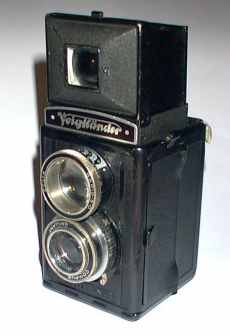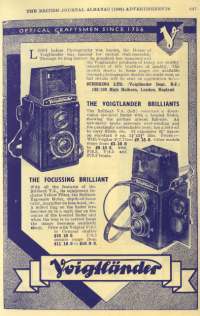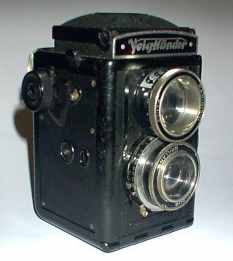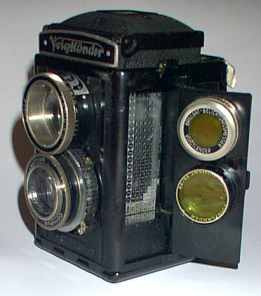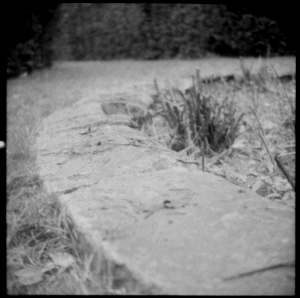 |
|||||||||||||||||||||||||||||||||||||||||||||||||||||||||||||||||
|
|
|||||||||||||||||||||||||||||||||||||||||||||||||||||||||||||||||
|
Click here for complete Site Map
Its worth pointing out that the 'Focussing' in the title 'Voigtlander Focussing Brilliant' refers only to the upper viewfinder lens. As far as I can tell, ALL Brilliants had focusing on the lower taking lens (and I also never realised until I read the above advert that 'Focussing' and 'Focusing' are both correct spellings!). The Voigtlander Brilliant was available in a large range of shutter and lens combinations. In 1939 the basic non focusing viewfinder model (the V6) started at (pounds, shillings and pence), £2 15s 0d and went up to £8 12s 6d. The Focussing Brilliant as pictured here started at £10 10s 0d and went up to £16 0s 0d. This particular model I believe would have cost £11 10s 0d. According to the dealer stamp inside it was sold by the Sheffield Photo Co Ltd. At Year 2000 prices this would equate to a massive £349!
Focussing Brilliant cameras are relatively common so do not fetch a large amount of money. Today expect to pay £20 to £40 for a Focussing Brilliant, depending on lens/shutter fitted. Also make sure the cloud filter and extinction meter adaptor are in the filter compartment. If not - at least get a discount as these items will be hard to find on their own. This Voigtlander Focussing Brilliant has had one trip out with some success. It proved to be as easy/hard to use as a Lubitel (the ground glass dot on the focussing screen in both cameras is quite difficult to use) and the automatic frame counter was temperamental, loosing a whole frame somewhere and leaving uneven spacing amongst the other 11. There was also some evidence of vignetting in the corners of the photos which might indicate the Voigtar lens doesn't really have the coverage for the full 6x6cm frame. Overall though the following photos prove the camera is in working order and with care and practice I expect it would produce good results.
Some very helpful instructions for the non focusing Brilliant V6 can be found on the MarriotWorld site. Another good Voigtlander Focussing Brilliant page can be found at: http://www.cosmonet.org/camera/brilia_e.htm Got a question or can't find the info you are looking for? Click HERE to contact us. Click here for other camera shelves Click here for complete Site Map |
||||||||||||||||||||||||||||||||||||||||||||||||||
|
All text and images Copyright © 2000-2011 Roland Givan, unless otherwise stated. All Rights Reserved. |
